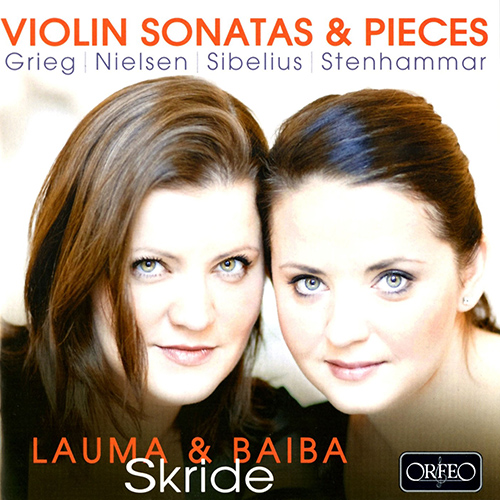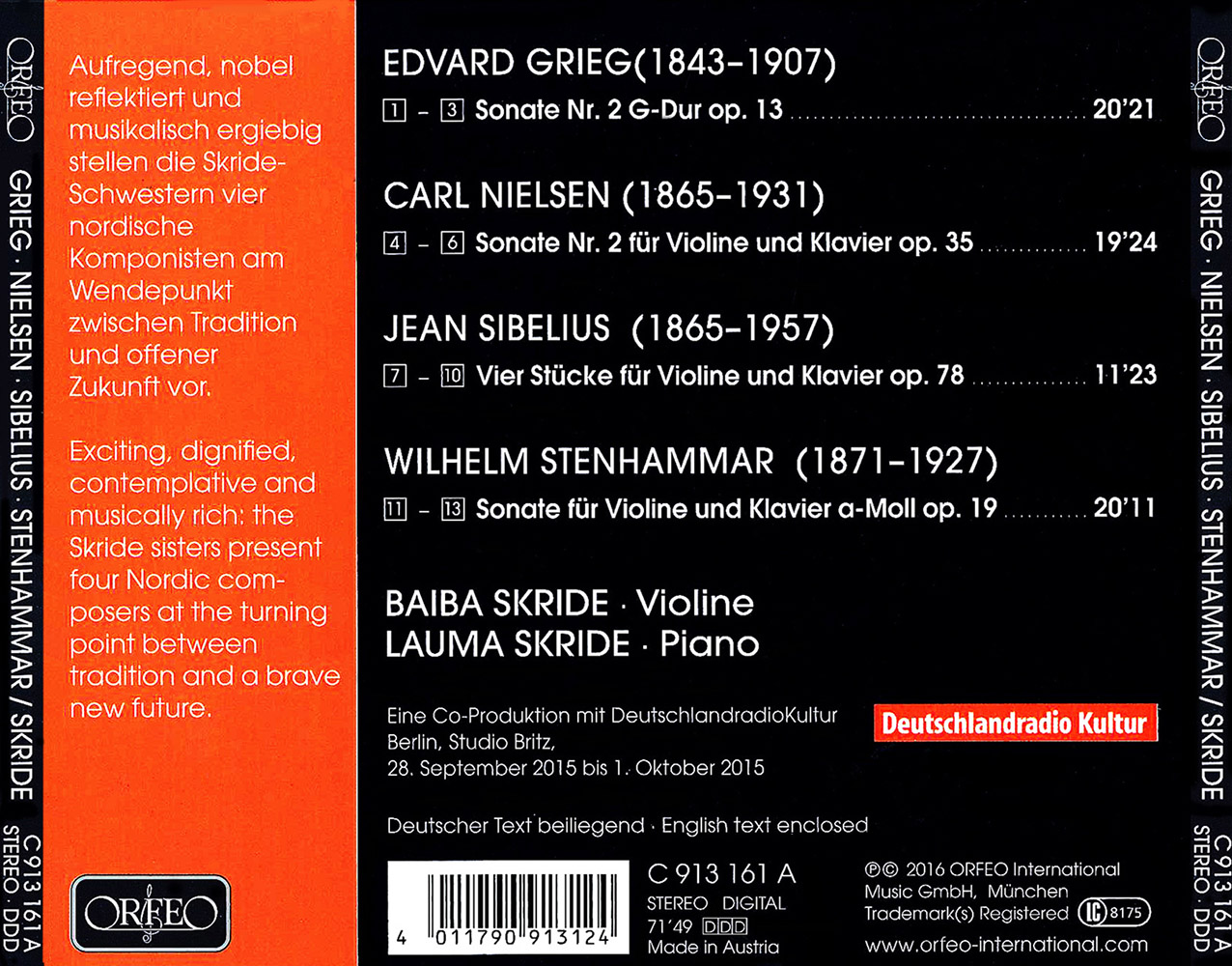Composer(s):
Artist(s):
Genre(s):
Chamber Music
Period(s):
20th Century; Romantic
Label:
Orfeo
Catalogue No:
C913161A
Barcode:
4011790913124
Release Date:
01/2016
Available Format(s):
CD
Violin Sonatas & Pieces
Grieg, Edvard
Violin Sonata No. 2 in G Major, Op. 13
Nielsen, Carl
Violin Sonata No. 2, Op. 35, FS 64
Sibelius, Jean
4 Pieces, Op. 78 (version for violin and piano)
Stenhammar, Wilhelm
Violin Sonata in A Minor, Op. 19
Total Playing Time: 01:11:19

















